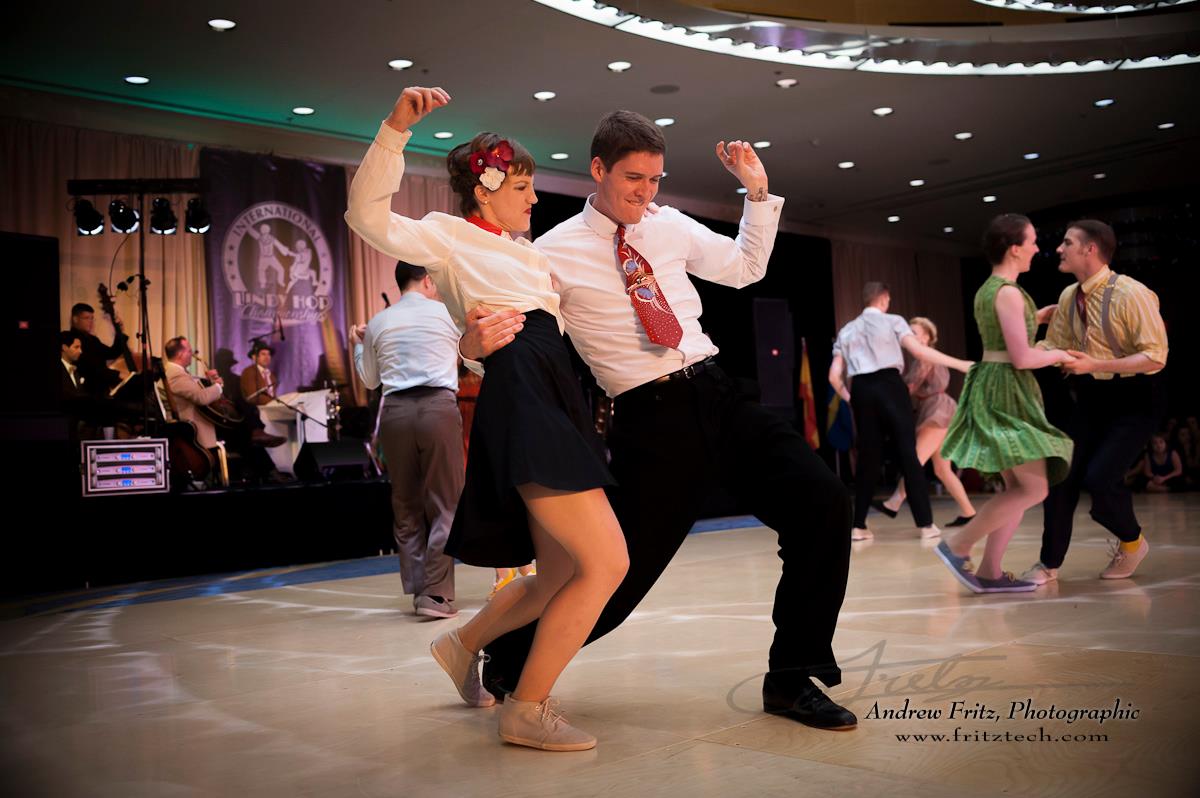During my first week teaching in Madrid, this couple walks into the Intermediate Lindy Hop class and approaches me stating “we’re not sure if we should be here.” I reply that the beginner level is probably too easy for them. Insulted, I hear “we’ve been dancing for 4 years”. They apparently desired entry into our advanced lindy hop class, so I kept my eye on them. They didn’t stand out enough from their peers, so I was content to leave them in intermediate. They never returned.

This past week, from December 26 through January 2, I was at Lindy Focus, the large US NYE lindy hop event. Plans included dancing, dining, hanging out, creating random fun, and volunteering. Since I used Sosh’s level testing application at the Atlanta Varsity Showdown, I was asked to assist the Lindy Focus crew during level testing.
Until you realize you’ll audition approximately 410 people within 3.5 hours, level testing seems easy. My possible duties included being on the audition team or live tracking the audition scoresheets making sure everyone received at least 3 judges votes. Michael, Jaya, and Sosh were intent on make sure the audition process was accurate, judicious, seamless and timely. It helped they provided us drinks and pizza. Through their online registration questionnaire, they were able to segment everyone into 4 tracked groups inside each of the 3 major audition groups and provide the judges with scoring notes for each heat. Michael organized and “unzipped”, Rob dj’ed, Jaya and Sosh monitored, others rotated and numbered everyone, ringers filled in, judges quickly judged using their iPad application.
The audition groups were relatively homogeneous. You danced with people near or at your level. Each group danced to warmup songs and then were judged within their peer group. It made our job easier. In the end, each dancer was scored by 3-7 judges. Averages were taken, badges reprinted.
The next morning, the non-instructor judges and Sosh showed up at 8am to filter the late arrivals. Having seen the previous night’s 12 groups, we were able to sort everyone relatively quickly in groups of 3-4 couples. If people were unhappy with their placements from either testing session, they were asked to attend that day’s classes and come to the appeals that evening.
This brings me to my other duties, class evaluations. I was asked to attend every class and evaluate the levels, looking for any outliers. I took notes on the different levels, so I would be prepared for that night’s appeals. I was also on call with Sosh in case anyone showed up at registration and needed immediate placement. My notes, ranging from “roughly fluid, still slightly hitchy” to “fluid, body still thinking a bit or holding back”, helped me individually evaluate that day’s 10-15 extra class takers. Thank goodness I can lead or follow on different surfaces. Overall, I was pleased with every class’s participants. Between the online registration process and level testing, the results averaged out quite well.
Even so, you will always have people that think their level is too easy for them, want their significant other with them, or are hopeful they might get into a higher level. Therefore, the appeals process exists with limited spaces, a kind Sosh, and a bad cop Jo. Enter at your own risk, stand out among your other hopeful peers. We evaluated 100+ dancers that night. Less than 10% achieved their goals.
Overall, I thought the Lindy Focus level testing was successful. Each student danced with 5 different people to 5 different songs and were scored by 3-7 different judges. And, as I said before, classes were homogeneous.
My random thoughts:
Swingouts matter. Dance fluidity and body mechanics matter. Momentum matters. If dancing was speaking, aim to “Speak softly and carry a big stick; you will go far”.
The pace the teacher sets influences the students’ self-evaluation. I received the most level questions from high level students in a slow moving class.
Some teachers demand, others coddle, some monotone, others make conversation, some waste time, others drill, some engage, others distract with short shorts. Each teaching couple is different in philosophy, work ethic, and teaching mechanics. Be open minded students and assume they’re talking about you.
If you want personal feedback after level testing, we spent about 5-15 seconds looking at you. I suggest getting a private lesson. They’re worth it.
In the end, it’s not how long you dance that determines your class level. It’s how you dance that determines your level.




